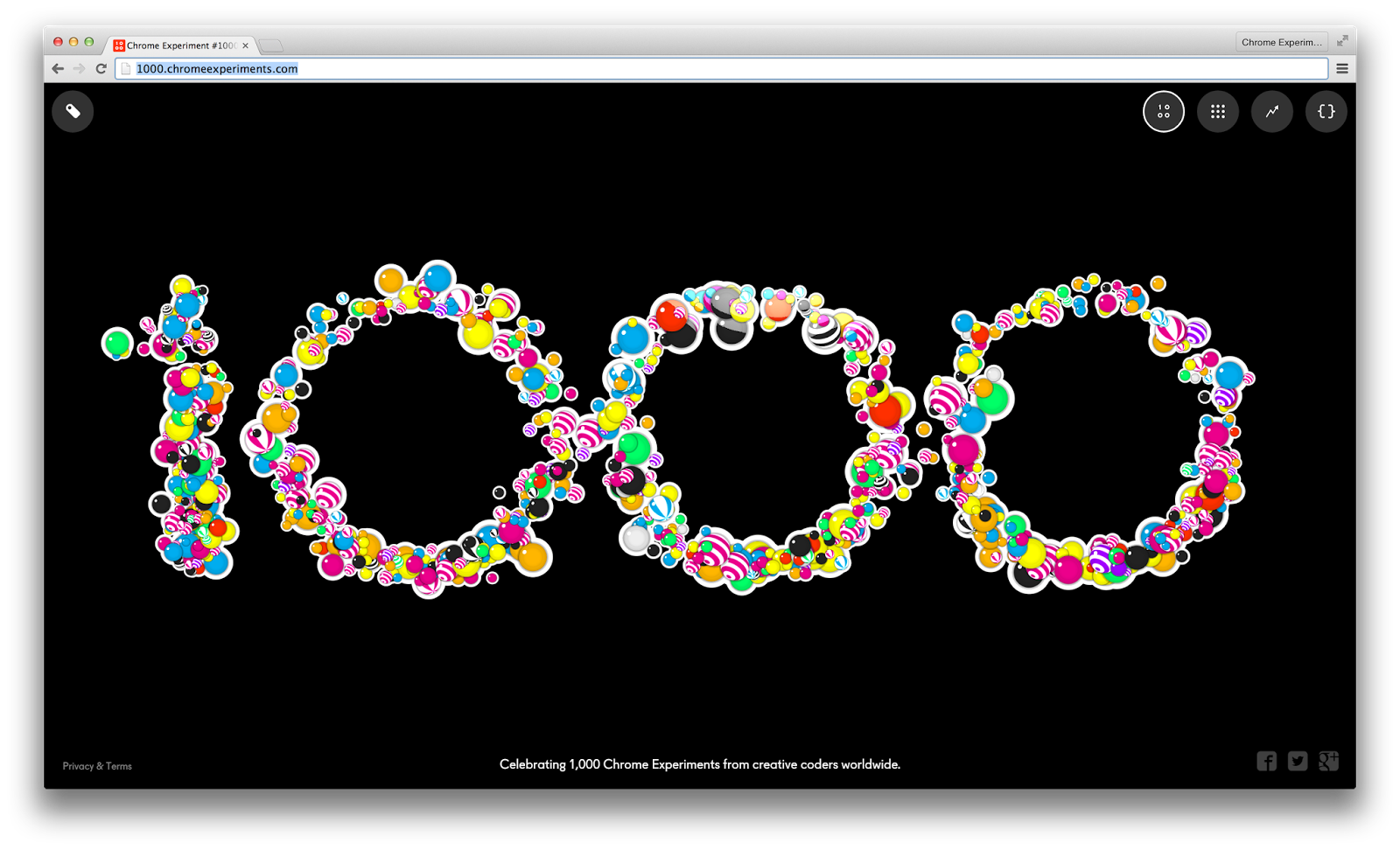- 首页
- chrome_win下载
- chrome_mac下载
- chrome_linux下载
- chrome插件
里程碑!Chrome实验和计算达到1000例
时间:2015-03-21 来源:未知 作者:chromedownloads 点击:次
自2009年以来,谷歌启动了“Chrome 实验”(Chrome Experiments)计划已经有快6年了,这个计划的目的就是为了给那些具有创造力的coder们一个展示利用HTML5和Javascript做出来的各种高大上页面的平台。刚开始的时候,这个平台上只有少的可怜的19个experiments,但是时至今日,在众多人的帮助下,已经达到了一个里程碑,1000个experiments。真正成为了那些从事艺术和开源web技术的人灵感的源泉。
为了庆祝这样的盛事,谷歌特意做了一个Experiment #1000页面,以供大家以各种方式去查看。包含了代码实时编辑(real-time code editor)功能、时间轴选择(timeline with selectable tags)功能。

当然,随着现在移动智能设备的兴起,不支持手机实在是不明智的,因此谷歌技术团队用Polymer重新设计了ChromeExperiments.com,以便能够支持各位看官们的手机和平板。
以下分别是Mr.doob的经典Ball Pool、Gregg Tavares的first WebGL experiment、Dinahmoe用Node.js写的多人语音小程序Plink,以及2012首个放出的手机experiments(使用手机打开看),AlteredQualia的Multitouch Toy,Dominic Szablewski的X-Type。各位看官,如果条件允许(部分需要翻墙),还是非常值得花点时间去看下这些新奇的,充满的创意的新web技术的。
限于本人英文水平实在拙急,以下是原文:
In 2009, we launched Chrome Experiments to showcase the work of creative coders who pushed HTML5 and JavaScript to the limits in order to build beautiful, unique web experiences. At first, the site had only 19 experiments, but we hoped they would be a source of inspiration for programmers who made art with open web technologies. Since then, we’ve been humbled by the quantity and quality of new submissions. Today, we’ve reached a major milestone: 1,000 experiments.
To celebrate, we’ve created a special Experiment #1000 that visualizes every other experiment on the site. You can explore all 1,000 in a variety of ways, including a real-time code editor and a timeline with selectable tags. Click on the WebGL tag, for example, and you’ll see how that technology surged in popularity when it was added to Chrome in 2011.
Along with Experiment #1000, we’ve redesigned ChromeExperiments.com using Polymer. It’s mobile-friendly, so no matter what kind of phone or tablet you have, or how you hold it, the site scales smoothly. If you’re on your phone, you can also filter the list to mobile-compatible experiments by selecting the Mobile tag.
Looking back at the old experiments this month has been a joy. Highlights include Mr.doob’s classic Ball Pool (one of the original 19 experiments), the first WebGL experiment by Gregg Tavares (try 4,000 fish – this used to be very slow!), and Dinahmoe’s multiplayer audio toy Plink, which combines the Web Audio API with Node.js. At Google I/O in 2012, we released the first mobile experiments, including AlteredQualia’s Multitouch Toy and Dominic Szablewski’s X-Type. And each year afterward, new web technologies appeared, like getUserMedia and the Web Speech API. It’s been a wonderful journey.
Thank you to everyone who has supported the site, and most of all to the creators who have shared their work. We’re excited to see what experiments you come up with next.
Valdean Klump, Data Arts Team

说点什么吧
- 全部评论(0)
还没有评论,快来抢沙发吧!
